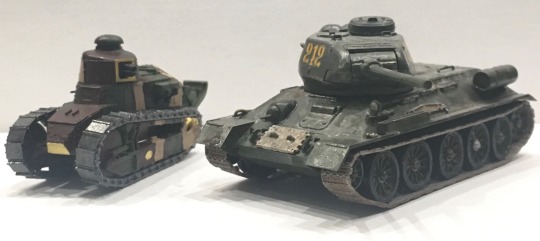#Renault FT
Text

Destroyed Yugoslav Renault M-28 in Macedonia, 1941
#balkans campaign#mediterranean theater#Renault FT#french armor#french tanks#axis invasion of yugoslavia
35 notes
·
View notes
Text

Mademoiselle et vieille dame
20 notes
·
View notes
Text
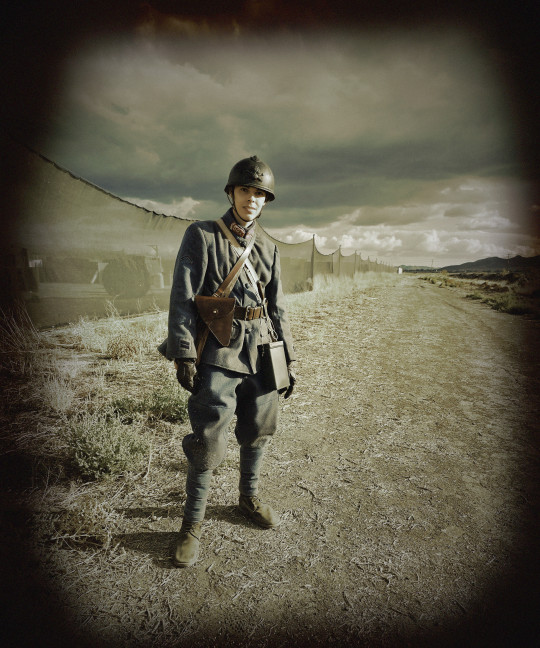

Great War French Tankiste Impression, circa 1918. Airsoft compatible here!
#uniforms#gear#tactical gear#history#tanks#renault ft#technology#military#ww1#ww1 history#world war 1#world war one#great war#military history#reenactment#reenactors#reenact#reenactor#reenacting
24 notes
·
View notes
Photo

Lieutenant Colonel George Patton de la 1ère Brigade de chars devant un char Renault FT – Eté 1918
©United States Army Signal Corps
#WWI#Avant-guerre#Pre-war#Les femmes et les hommes de la guerre#Women and men of war#Personnages militaires#Personnages historiques#Figures militaires#Figures historiques#Historical figures#George S. Patton#Char#Tanks#Char léger#Light tank#Renault FT#1918
23 notes
·
View notes
Text
Renault Tanks In America

Manufacturing tanks; the Van Dorn Iron Works Co., Cleveland, Ohio. Mud hole in testing field
National Archives Identifier:45508599
Local Identifier:165-WW-313A-88

National Archives Identifier:45508569
Local Identifier:165-WW-313A-73

Camp Colt, Gettysburg, Pennsylvania. Capt. D. Eisenhower, left, commander of the camp, and Lieut. Owens, in charge of tanks, on one of the camp tanks
National Archives Identifier:45508571
Local Identifier:165-WW-313A-74

National Archives Identifier:45508573
Local Identifier:165-WW-313A-75
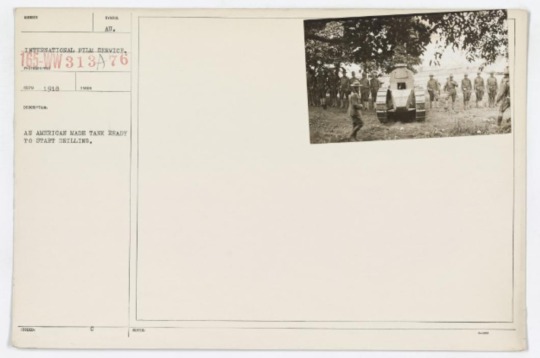
National Archives Identifier:45508575
Local Identifier:165-WW-313A-76

National Archives Identifier:45508577
Local Identifier:165-WW-313A-77

National Archives Identifier:45508579
Local Identifier:165-WW-313A-78

National Archives Identifier:45508581
Local Identifier:165-WW-313A-79

National Archives Identifier:45508583
Local Identifier:165-WW-313A-80

National Archives Identifier:45508535
Local Identifier:165-WW-313A-56

Motor Vehicles - Tanks - American - Manufacturing tanks; the Van Dorn Iron Works Co., Cleveland, Ohio. Rear view of tractor, closed
National Archives Identifier:45508537
Local Identifier:165-WW-313A-57

National Archives Identifier:45508539
Local Identifier:165-WW-313A-58

National Archives Identifier:45508543
Local Identifier:165-WW-313A-60

American two man-six ton tank. For quick transportation to places of safety a rubber tired ball-bearing truck is provided. An American artillery tractor being provided to haul the entire outfit over any kind of roadway.
National Archives Identifier:45508440
Local Identifier:165-WW-313A-9
8 notes
·
View notes
Text
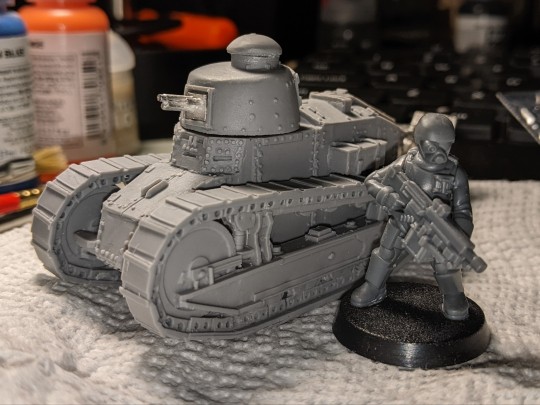
Tiny tank!!! Insane to realize just how small this guy is.
24 notes
·
View notes
Text
☾ intro to jupiter nightshade (ft. the commentary by yours truly)
-> series masterlist

Jupiter Nightshade.
How do you even begin to describe her?
Jupiter was everyone’s dreams and everyone’s nightmare.
You love Jupiter, you hate her, you admire her, you’re terrified of her, you want to be her, you want to be with her.
Some people even say that she’s a real daughter of the sky — others even dared say she is the God Jupiter of the sky.
But those were just rumors, probably.
Hard not to believe those when the woman looked like she belongs in a museum of fine art. Models envy her, they kiss the ground she walks on and thank whatever higher power that she decided to join the world of motorsports. She would render them all jobless if modelling was her actual career rather than it being an occasional obligation.
The gods really took their time with her. Dark, jet-black hair cascades down her back — she never really keeps it long, she had to wear layers a lot and she was not a fan of the itch and heat restrictions it gave her so she always opted for a short messy haircut. Her skin glowed olive, under the sun, it often looked like she was made of part-gold. But, oh, dio mio!—as she would say—her eyes, her eyes; they’re the magnet to all that is deserving, they’re blessed to those lucky enough to have been even looked upon with those eyes. Both a piercing shade of emerald green—only, here’s the twist, the drop of uniqueness to it; her left eye was split into two between the striking green and a soft brown.
Call it dramatic but what I say doesn’t stray far from the truth.
That was her looks. I can’t even begin to describe the talent, the spirit she possesses.
“THAT’S P1, KID! P1 ON YOUR FIRST RACE!” her engineer yelled in her radio, his words coming out of his mouth along with breaths of disbelief.
The racer hadn’t even heard a word he said, she was far too busy taking in the glory of the shock coming from the stands. There were occasional boos of course, but of course that doesn’t begin to beat the cheers coming for her. The rookie.
She was on a high, one she has never felt before. Not even when she was named F2 champion or any other race she’s won before. Formula One was a new kind of glory for her and boy she was already hungry for more.
That hunger? Never went away for the rest of her rookie season. Jupiter Nightshade was a mad woman and that made everyone (all the good ones anyway) fall in love with her.
God, she could never be full of the glory. Every moment she managed to get more it only makes her even hungrier for more.
“JUPITER NIGHTSHADE YOU ARE A GOD!” the energetic yells of her team principal boomed through her radio, almost making her flinch.
“Tell me something I don’t know.” she said smugly.
Ugh, what a smug little shit.
I still think she’s cool or whatever.
Think what you want to think about Jupiter Nightshade but everyone can always agree that she’s full of surprises.
Really, she didn’t know where it came from. One second she was kissing her winning trophy while perched up on the second and third driver’s shoulders, the next; champagne was everywhere and she was in the air — mouthful of champagne, (she’s young, she’s free, and most importantly, she was a winner. She thought.) she sprayed the liquid that was already in her mouth to the P2 holder, completely surprising them—not that they’re mad or anything about it, they were just taken by surprise by it and let it happen. Then she turned to the lucky three with a smirk on her face; the man was quick to try and duck away but she was faster than that (on-track, off-track, there isn’t much difference between her), spraying right into his face.
And, really, that was how it started.
It was… an interesting, but hot nonetheless—according to the Twitter sapphics anyway. (They’re right.)
But being one of the greatest always came with its negatives — worse when you’re a woman.
She was the world champion.
She was a rookie driver in a Renault with a world champion.
And yet… they are boo-ing her.
On the internet, anyway.
Which makes it even better. If they’re not brave enough (or, rich enough to even attend a Grand Prix) to say it to her face, what real value do their words even have?
But for now, she can only accept her first domination under the building lightning storm in the sky.
And hence, born was her first nickname—and I’m not talking about the world driver’s champion—no; from then on, the daughter of the sky was born.

What a scam! — 2019 spat out, Jupiter was called the rookie with immense beginners luck.
Cunt. She thought.
The media that once ridiculed her then acted as if they never doubted her a day in their life was once again turning their back on them.
Typical, she thought. Fame-hungry-worthless-losers with no sense of wording in their body whatsoever.
When asked about it, her answer was simple; the only answer she had given to the world that retched year:
“The car is finally realizing who’s driving it and just couldn’t keep up.”
Renault was angry.
How. Dare. She.
They gave her an F1 car for the first time in her career, they catered her to a championship in it, and this is how she repays them?
At that, she rolls her eyes, “What, like I’m wrong?”
You make a car that accommodates a champion’s needs, you get a champion.
Nightshade is not for the weak.
So when she made her move to Red Bull in 2020 many was not surprised — ‘it’s been a long time coming.’ (I know right, why didn’t she do it sooner?) — ‘of course, she did.’ (the fuck you mean by that?) — ‘oh, great, more overconfident Red Bull drivers, just what we need.’ (damn, right it’s what we need.) — and my personal favorite: ‘was she not already in Red Bull?’ (oh they wished they had hired her sooner.)
By the time her third WDC came around, people have already treated her like an evil dictator taking over Formula One.
The internet (and, Netflix too probably) have successfully painted over her spirit turning her into this soul-sucking, dream-stealing, non-caring of others’ well-being person.
Everyone was suddenly far too busy looking for her faults; everyone.
Did they care that she’s a woman dominating in a male-dominated sport? Not anymore (they miss having their favorite white man win.)
Did they even bother caring about who she was doing this for? (No, why should they? She’s not of any relevance.)
Did they even bother opening their eyes to the fact that Jupiter Nightshade is a good person.
To look past her brash personality, interesting habits, and behavior and just see her for what she stands for, to what she is proving; that how the media—the world treats her gender unfairly when the opposite can do the exact same thing (hell, sometimes even worse) and not be bashed as much as she was getting.
They can say what they want about her but she’ll be the one hearing “You are the world champion!” in her ears at the end of the season.

not proofread | taglist; @disneyprincemuke (no one was surprised) + ask to be added 🥳
#f1 fanfic#f1 imagine#formula one x oc#formula one#formula 1#formula 1 x original character#formula 1 x you#formula 1 x female character#f1 smau#formula 1 smau#formula one smau#formula 1 x oc#f1 x driver!reader#f1 x you#tine’s the big three#f1 x original character
114 notes
·
View notes
Text
This is the Ford Model 1918 3-Ton tank.

Designed in 1918 by the Ford Motor Company, it was one of the first American tanks ever produced.
The M1918 weighed only 3 tons, as the full name suggests. It was an incredibly small tank, measuring 4.3 metres (14 ft) long, 1.8 metres (6 ft) wide, and 1.8 metres tall, and having just two crew members (one driver, one gunner) in its extremely cramped hull.
Despite its engines having been pulled right out of a Ford Model T and getting discribed as anemic, the M1918 had a fairly quick top speed for the time at 12.8 km/h (8 miles/h)

Those silly arms on the back of the tank help it avoid getting stuck in ditches!
Despite being intended as a light tank, the first two prototypes didn't even have a gun. They were effectively just lightly armoured boxes that you could sit a person in.

The idea behind the M1918 was that it would be used to safely transport soldiers and weaponry onto a battlefield, though it didn't end up being very good at that.
This thing was a death box :D
It was based off of the French Renault FT-17, but is worse in almost every way possible.
When the final design of the M1918 eventually got to have a machine gun, it would still be incredibly limited in its use due to an extremely small range of motion. And although the tank does have angled armoured plating unlike SOME early tanks (looking at you, Sturmpanzerwagen A7V), the armour thickness was only a maximum of half an inch thick, leaving it vulnerable to anti-tank weaponry and concentrated machine gun fire.
On both the FT-17 and the M1918, the engines are located directly behind the crew compartment. The FT-17 has a metal divider between the engines and crew to give them time to escape in case of an engine fire.
The M1918 doesn't!
If you are operating this tank and the engines catch fire, you are dead!
Isn't that wonderful? :D
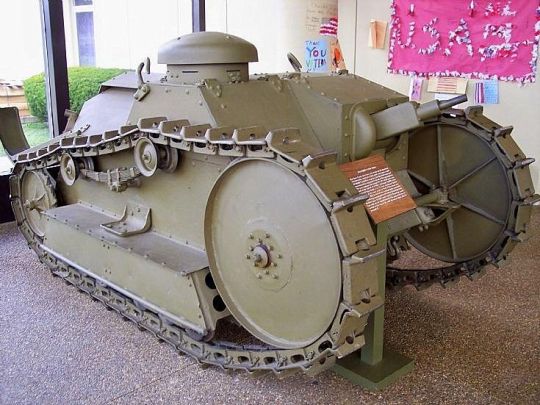
The US Army had a contract with Ford to produce 15 thousand M1918s, though testing proved the use of the tank to be quite limited compared to the readily available FT-17s. Production was halted after WW1 ended, with only 15 tanks being fully complete, and not one of them ever saw combat.
The two surviving M1918s are located in the National Armor and Cavalry Museum in Fort Benning, Georgia and the Ordnance Collection in Fort Lee, Virginia.
Sources: X , X
#This tank is such a deathbox though#I was literally screaming while researching this#history#tankposting#tanks#ww1 history#ww1 tanks#American tanks#American history
39 notes
·
View notes
Note
what’s your favorite tank? from a purely aesthetic perspective
Well, I'm not just going to answer Leo 2 again, cause that would be kinda cheap (even tho it's true, God I wanna fuck that tank).
So, instead, I'll go through a list of my esthetically favorite tanks throughout their history, as well as a 1 sentence description of why.
1917 - Renault FT-17 - it's an awesome light tank, as well as the first iteration of the modern form of the tank.
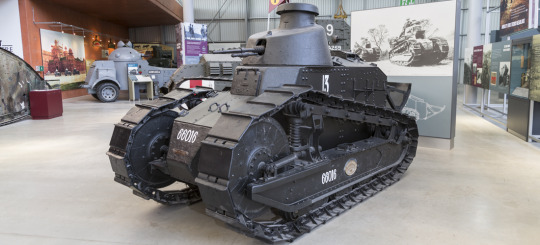
1942 - PzKpfw. V - a bit of a shameful favorite, but it just looks cool as hell.
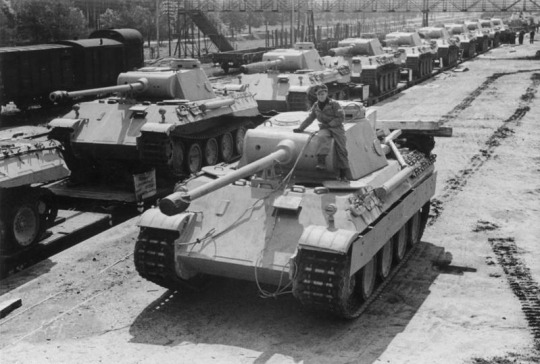
1943 - M18 GMC - it's just a badass tank destroyer, what do I even say? There's a 1/36 scale model of it on my shelf.

1953 - M41 Walker-Bulldog - it just looks badass. I have a 1/36 scale model of it sitting on my shelf right now.
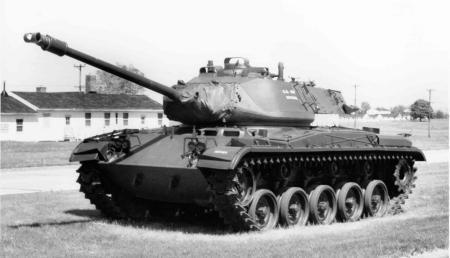
1980 - M1 Abrams - I mean, c'mon. I'm an American. What am I gonna pick other than the Abrams? It's the American cousin of the Leopard II, My Beloved.

So, I hope this was satisfactory? If not, I don't know, kick a Russian sympathizer or something.
17 notes
·
View notes
Text

Finnish tankers and Renault FT in the 1920s
29 notes
·
View notes
Text

Tankiste Operating Outside the Tank
This is an impression of a French tank crewman operating outside their tank. One may see this uniform on tank commanders marching in front of their tank with cane in hand during road marches and on other crew members behind the lines. The marching cane was particularly useful within the Artillerie Spéciale as tank commanders used it to judge the softness of the terrain the tank is moving over. Often one can tell which tankiste was the commander of the crew as they may be walking beside the tank nonchalantly with their marching cane.
Being outside the tank, the tankiste may be seen wearing their 2-liter Bidon Modèle 1877 modifié 1915 (canteen) and Étui-Musette Modèle 1892. Despite being one of the larger examples of a liquid container during the Great War, these canteens would most likely have wine or coffee inside them instead of water as the French struggled with providing clean drinking water to the troops for nearly the entirety of the war. The tankiste per regulation were issued two canteens, though usually only one was worn as pictured with the other stored elsewhere. The secondary canteen may also be in the form of the earlier 1-liter Bidon Modèle 1877. Both canteens would usually have different liquids in them.
The first cloth headgear issued to the tankiste was the standard infantry horizon blue wool Bonnet de Police Modèle 1918 service cap with its Napoleonic style of two tall peaks on each end. When performing vehicle maintenance, this service cap would sometimes fall off the head and get stuck in the small confines of the tank, becoming visibly dirty. Because of this, tankiste would purchase black civilian Basque style berets to replace their service cap, becoming commonplace by 1917. The berets seen being worn by the tankiste were all civilian berets purchased by the tankiste themselves and were not regulatory, varying in size and style. The black beret was well liked among the crews as it fit snugly on the head and would not fall off while inside the tank. Just to be safe many of the tankiste would wear the beret in an interesting fashion - centered and pushed snug down over the head to ensure it would not fall off. Wearing the beret like this appears to be some sort of inside fashion joke among Veteran tank crews, as this method of wearing the beret would continue after the war despite proper beret wearing regulations in place by then. Like the black leather coat, the black beret was chosen as it masked any vehicle oil stains the beret may collect when in use.
The beret would soon be adorned with various metallic or embroidered insignias such as rank stripes, badges, playing card symbols, and other miscellaneous AS pins. In the case of the tankiste here, he wears an NCO version of the original insignia of the Artillerie Spéciale, depicting a mythical fire breathing salamander. The NCO versions were in silver while the Officer versions were in gold. While not technically within regulation, the wearing of such insignias and unit markings was ignored by the AS administration as it promoted esprit de corps. The black leather coat was not immune to this adorning of insignia, and we can see here that a private purchase Renault FT pin has been placed on the left breast of the coat. Like the AS specialist insignia tab on the tunic, this pin is intended to show others that the wearer was a tank crewman when wearing the coat. This was less common to see but many of the enthusiastic and eager fighters within the AS would sport pins like these. Unlike the French infantry which were characterized as the rugged and reluctant warfighter Poilu, the tankiste remained in a high morale and eager to fight state throughout their service during the war - a side effect of incorporating many officers who previously served within other 'proudly elite' units like the cavalry.
Additionally we see a closer view of the regimental collar tabs and left arm service and insignia tabs. The buttons on the Vareuse Modèle 1915 were of course standard artillery buttons with a flaming bomb over two crossed cannons.
#history#tanks#renault ft#technology#world war one#reenactor#uniforms#reenacting#reenactment#reenactors#world war 1#uniform#tactical gear
13 notes
·
View notes
Text

the americans designing the six ton m1917 (colorized) - hetamyu shenanigans
below cut: local amateur military historian tells you about the model m1917
The Model M1917 6-ton light tank ("6-ton special tractor") was the first mass-produced tank by the United States. When the American Expeditionary Force made it to Europe by April 1917, they were not in possession of any tanks. The American forces would be loaned French Renault FT tanks and British Mk.V tanks early on, but soon the US would negotiate with the French government to obtain a license to produce the Renault FT (known posthumously as the Renault FT-17, etc.). This license to produce the Renault would soon become a near-copy reproduction, the M1917*. Initially, the US Government would place an order for 4,440 of these light tanks.
Unfortunately, only 950 would be produced before the order was canceled. Of these 950, only 64 would be completed by or before the end of World War I. Of these only two would be sent to France, arriving nine days after the armistice of November 20, 1918. Eight more arrived belatedly in December. No M1917s would ever see active combat service but would find uses elsewhere, such as in tanker academies in France, the United States, and Canada, among other things.
*Not to be confused with several other pieces of US equipment bearing the same designation (i.e., the M1917 steel helmet, M1917 Service Uniform, or M1917 trench boots).
Further Reading If Interested:
[src: 1 | 2 | 3 ]
#hetalia#historical hetalia#aph america#hws america#alfred f jones#hetamyu#gremlin shitpost#gremlin tankposting#gremlin military history
157 notes
·
View notes
Text
22 favourite reads of 2022!
Yes, that’s a lot of books but also: you can’t ever have too many books. These are some of my favourite reads of the year, arranged by a very rigorous (joke) vibe-based categorization method that I made up myself
✧ the push by ashley audrain — Favourite novel about Creepy Children; alternatively: Favourite novel about A Woman Going Fucking Through It.
✧ bunny by mona awad — Favourite "what the fuck did I read” book, lives at the intersection of litfic and horror, and it’s like if the girlblogging side of tumblr got a MFA (this is a compliment)
✧ jonathan strange & mr norrell by susanna clarke — Favourite fantasy (with bonus footnotes, cruel faeries, and alternate history)
✧ bringing down the duke by evie dunmore — Favourite historical romance
✧ the witch elm by tana french — Favourite book about terrible characters suffering. Techically also a mystery thriller but the POV does the heavy lifting in why it’s so good
✧ the echo wife by sarah gailey — Favourite speculative fiction that makes a very good case for clonefucking
✧ the plot by jean hanff korelitz — Favourite litfic with a bonus side of Woman, Unhinged
✧ last tang standing by lauren ho + lucie yi is not a romantic also by lauren ho — Favourite romance, specifically: favourite het romance about a career woman over 30 who’s going through it in Singapore, and also the leading men are adorable”. Stellar audiobook version too
✧ my heart is a chainsaw by stephen graham jones — Favourite horror and favourite Horror Final Girl ft. lesbian vibes
✧ erotic stories for punjabi widows by balli kaur jaswal — Favourite contemporary fiction, and also this is THE book you should gift to people. It has universal appeal and it’s wicked fun and might make you cry
✧ long bright river by liz moore — Favourite murder mystery that’s actually about disfunctional families and your own inner demons. Basically, the Dublin Murder Squad school of sad detectives.
✧ apples never fall by liane moriarty — Favourite domestic suspense but it’s Liane Moriarty so it’s inevitably forthy domestic suspense about middle class het Sydney couples with children. It’s also infuriatingly well written
✧ a deadly education by naomi novik — Favourite YA ft. plucky goth babygirl with death powers
✧ empire of pain by patrick radden keefe — Favourite nonfiction
✧ the last of the wine by mary renault — Favourite homoerotic historical fiction
✧ houston, houston, do you read? by james tiptree jr. — Favourite novella + favourite scifi. Technically a reread but it’s great and you should read it so here it goes! Also I needed a fave story In Space that wasn’t Harrow The Ninth
✧ the feminist by tony tulathimutte — Favourite short story
✧ the cherry robbers by sarai walker — Favourite gothic vibes historical fiction, and also ghosts and lesbians
✧ fingersmit by sarah waters — Favourite historical fiction about scheming Victorian lesbians. If you’ve watched The Handmaiden, this is the book that inspired it
✧ thank you for listening by julia whelan — Favourite book about books, specifically Book About Making Romance Audioplays. Stellar audio version, too
✧ the last housewife by ashley winstead — Favourite book that’ll make you feel physical discomfort and make you want to commit murder. I loved this book and I want to tattoo it to the inside of my eyeballs but also: the content warnings aren’t fucking around
#book talk#book rec#*sobbing and crying*#i love books#these are 21 very specific categories and lauren ho gets 2 recs#pinned
105 notes
·
View notes
Text


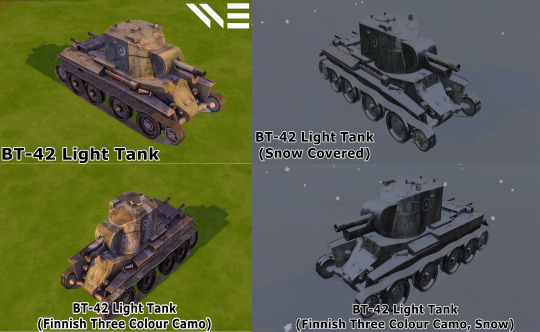








Finnish Army WW2 Light Tanks
One Of My Patron Request and Also Part Of Great Projects about Weapons and Heavy Machinery That Used During Winter War (1939-1940) & Continuation War (1941-1944) About The Finland Wars Against Soviet During during early and later Stages Of World War 2. For Your Informations Finnish Army During WW2 Heavy Machinery During Winter Wars Are Rely On Captured Soviets Tanks, Obsolete WW1 Products Or Licensed Products From Allied Countries
Disclaimer:Due Heavy Censorship Regarding Swastika Usage in Western Society, The Details of The Tanks Are Replaced With Roundel Instead of Finnish Hakaristi. However It Just A Minor Details that May Missed.
DOWNLOAD
Support Me In Patreon for Exclusive Business Agreement Or Support Me In Paypal For One-Time Support
BT-5 Light Tank
The BT tanks (Russian: Быстроходный танк/БТ, romanized: Bystrokhodnyy tank, lit. "fast moving tank" or "high-speed tank") were a series of Soviet light tanks produced in large numbers between 1932 and 1941. They were lightly armoured, but reasonably well-armed for their time, and had the best mobility of all contemporary tanks. The BT tanks were known by the nickname Betka from the acronym, or its diminutive Betushka. The successor of the BT tanks was the famous T-34 medium tank, introduced in 1940, which would replace all of the Soviet fast tanks, infantry tanks, and medium tanks in service.
This Particular Variant is BT-5: Armed larger cylindrical turret, 45 mm 20-K gun, coaxial DT machine gun. Earlier tanks used simpler fully cylindrical bolted turrets with rear bustle welded on.
BT-42 Light Tank
During the WWII, the Finnish Army utilized captured Soviet tanks as their significant armament. Among these was the BT-42 assault gun which the Finnish Army created by pairing the hull from a captured Russian BT-7 Model 1937 light tank with a British 114mm howitzer and a redesigned BT-7's large boxy turret. 18 units were produced from 1943 to 1944 and they were deployed to the Svir River region to attack the Russian bastion. In June 1944 during the Battle of Vyborg, BT-42s saw fierce combat against advancing Russian forces.
Renault FT-17 Light Tank
The Renault FT (frequently referred to in post-World War I literature as the FT-17, FT17, or similar) was a French light tank that was among the most revolutionary and influential tank designs in history. The FT was the first production tank to have its armament within a fully rotating turret. The Renault FT's configuration (crew compartment at the front, engine compartment at the back, and main armament in a revolving turret) became and remains the standard tank layout. Consequently, some armoured warfare historians have called the Renault FT the world's first modern tank. Over 3,000 Renault FT tanks were manufactured by French industry, most of them in 1918. After World War I, FT tanks were exported in large numbers. Copies and derivative designs were manufactured in the United States (M1917 light tank), in Italy (Fiat 3000) and in the Soviet Union (T-18 tank). The Renault FT saw combat during the interwar conflicts around the world, but was considered obsolete at the outbreak of World War II.
This Model Armed with Puteaux SA 1918 37 mm gun While The Other , Equipped With 8mm Hotchkiss Mle 1914 Machine gun for Anti-Personnel Purpose (Not Showed in Review)
KhT-130
KhT-130 is Flamethrower variant of model 1933 which is Variant Of Soviet T-26 Tank, The Most Successful and Most Modular Pre-WW2 Light Tanks using a larger 45 mm gun turret (a gun was replaced with a flamethrower for Anti-Personnel Purpose).
Landsverk L-62 Anti II
Landsverk L-62, also known as Landsverk Anti II or a combination of both, Landsverk L-62 Anti II, was a Swedish self-propelled anti-aircraft gun construction that was specifically designed for Finland by Landsverk between 1941 and 1942.
The vehicle was an improved Landsverk L-62 Anti I where the turret and chassis had been improved for better protection. The chassis was based on the Landsverk L-60 tank but was lengthened with one extra roadwheel per side. The turret was circular and open for a better view against planes. The gun was a 40 mm Bofors L/60 anti-air gun which was already in service with the Finnish military as the 40 ItK/38.
Vickers Mark E
The Vickers 6-ton tank or Vickers Mark E, also known as the "Six-tonner" was a British light tank designed as a private project at Vickers. It was not adopted by the British Army, but was picked up by many foreign armed forces. It was licensed by the Soviet Union as the T-26. It was also the direct predecessor of the Polish 7TP tank.
Hotchkiss H39 Light Tank (German:PzKpfw 38H-735)
The Hotchkiss H39 (a variant of the Hotchkiss H35) was captured and used by Germany as the PzKpfw 38H-735.
The Hotchkiss H35, or Char léger modèle 1935 H, was a French light tank developed prior to World War II. Despite having been designed from 1933 as a rather slow, but well-armored, light infantry support tank, the type was initially rejected by the French Infantry because it proved difficult to steer while driving cross-country, and was instead adopted in 1936 by the French Cavalry. In 1938, an improved version was produced with a stronger engine, the Char léger modèle 1935 H modifié 39, that from 1940 was also fitted with a longer, more powerful 37 mm gun. It was intended to make this improved variant the standard light tank, and was to be produced in a number of at least four thousand in order to equip new armored divisions of both the Cavalry and the Infantry. However, due to the defeat of France in June 1940, total production of both subtypes remained limited to about 1200 vehicles. For the remainder of the war, Germany and its allies would use captured Hotchkiss tanks in several modifications.
Hotchkiss H39 Light Tank (German:Panzerkampfwagen 38H 735(f))
Variants of A Captured Hotchkiss H39 Tank by German, Outfitted with Nebelwerfer 42, A 30mm German Rockets.
Soviet T-50
The T-50 was a light infantry tank built by the Soviet Union at the beginning of World War II. The design for this vehicle had some advanced features, but was complicated and expensive, and only a short production run of 69 tanks was completed.
Soviet T-26
The T-26 tank was a Soviet light infantry tank used during many conflicts of the 1930s as well as during World War II. It was a development of the British Vickers 6-Ton tank and is widely considered one of the most successful tank designs of the 1930s. It was produced in greater numbers than any other tank of the period, with more than 11,000 produced. During the 1930s, the USSR developed approximately 53 variants of the T-26, including other combat vehicles based on its chassis. Twenty-three of these were mass-produced. The T-26 was used extensively in the armies of Spain, China and Turkey. In addition, captured T-26 light tanks were used by the Finnish, German, Romanian and Hungarian armies. Though nearly obsolete by the beginning of World War II, the T-26 was the most important tank of the Spanish Civil War and played a significant role during the Battle of Lake Khasan in 1938 as well as in the Winter War in 1939-40. The T-26 was the most numerous tank in the Red Army's armored force during the German invasion of the Soviet Union in June 1941. The Soviet T-26 light tanks last saw use in August 1945, in Manchuria. The T-26 was reliable and simple to maintain, and its design was continually modernized between 1931 and 1941, with a total of 11,218 vehicles built. However, no new models of the T-26 were developed after 1940.
Soviet T-26E
Variant Of Soviet T-26 tank with additional armour plating (appliqué armour). Some modern sources mention this tank as T-26E (E stands for ekranirovanny or "screened"). The Factory No. 174 developed the design of 30–40 mm appliqué armour for all types of single-turreted T-26s during the Winter War. On 30 December 1939, factory tests proved that the T-26 with appliqué armour successfully resisted fire from a 45 mm anti-tank gun at a range from 400 to 500 m. Side and front armoured plates were mounted with the use of blunt bolts and electric welding. Toward the middle of February 1940, the RKKA received 27 screened T-26 mod. 1939 tanks and 27 KhT-133 flame-throwing tanks; an additional 15 T-26 mod. 1939 tanks were armoured by workshops of the 8th Army in Suoyarvi in the beginning of March 1940. All in all, 69 T-26s with appliqué armour were used during the Winter War and 20 more were delivered to tank units after the end of the war. Combat use proved that Finnish light anti-tank guns could not penetrate the armour of these tanks.
#the sims 4#the sims#the sims 4 custom content#ts4 cc#ts4military#the sims 4 military#ts4#the sim#the sims 4 cc#ts4cc#finland#soviet union#winter war#the sims 4 decades challenge#ts4 decades challenge#the sims 4 decor#russian tanks#Tanks#the sims 4 build#sims 4 decades#decades challenge#1930s#1940s#Sims 4 war#world war 2#the sims 4 ww2#ww2#light tank
36 notes
·
View notes


